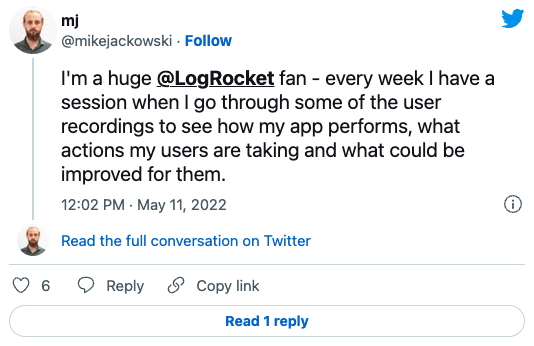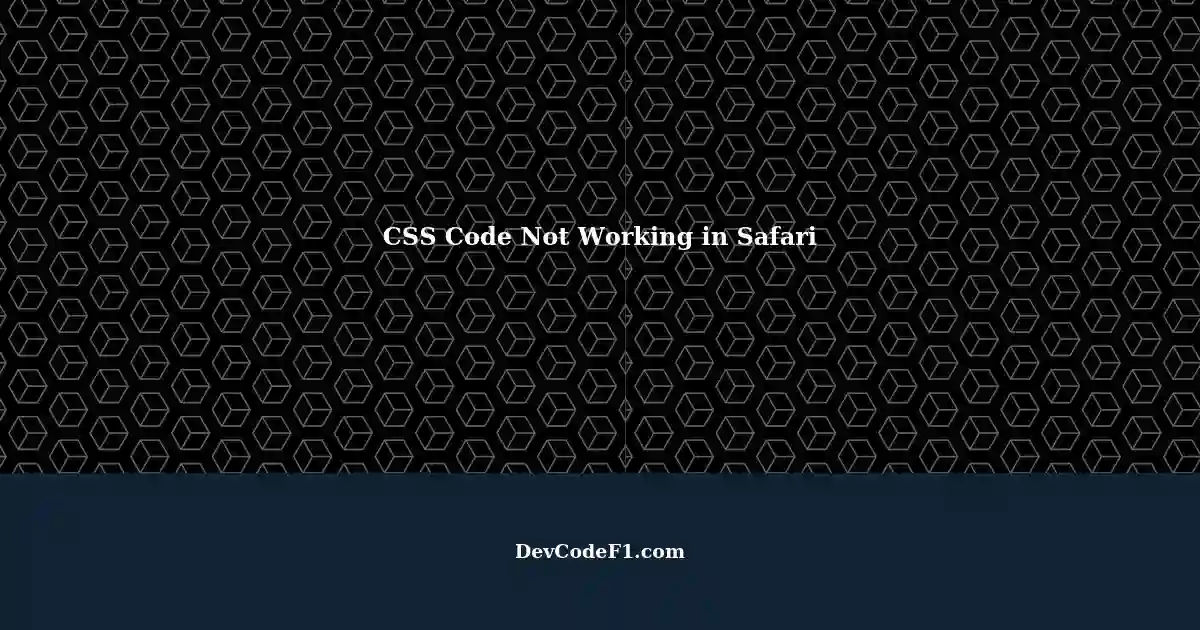Conditional CSS
Tiffany B. Brown , Webinista, Inc.
- @webinista on the Twitters
- Former member of the Opera Developer Relations & Tools Team
- Currently a freelance web developer
- 2012 MinneWebCon speaker and fan of Minneapolis between May and September.

What is Conditional CSS?
CSS features and their associated JavaScript APIs that let us apply styles or behaviors when a particular condition is met.
Conditional CSS: three @rules
- @viewport (not really conditional)
@media : a recap
Set styles for a particular media type.
@media and media queries
Applies styles for particular media features.
- device-width
- device-height
- orientation
- aspect-ratio
- device-aspect-ratio
- color-index
Media queries syntax example
@media demo
Media queries syntax examples
- @media only print
- @media not (aspect-ratio: 4/3)
- @media (min-width:400px) and (device-aspect-ratio: 16/9)
- @media screen and (min-width:400px), print and (max-width: 8.5in)
Media queries in style sheet links
Media with the <video> element.
With video demo
Media queries in SVG
Does not work in Internet Explorer 10.
- Based on the width of the SVG viewport
- Can refine, show, or hide SVG details as the image is scaled
- Allows for reusable, resizable elements
In SVG demo
matchMedia()
Window.matchmedia() api.
- An API for interacting with media queries.
- Defined in the Media Queries Level 3 Specification
matchMedia() syntax
Argument must be a valid @media rule.
- matchMedia("screen and (min-width:400px)");
- matchMedia("(orientation: landscape)");
Returns a MediaQueryList object.
MediaQueryList interface
- media : returns list of queries or not all if the argument isn't valid.
- matches : returns true if the state of the rendered document matches the media query, false otherwise
- addListener() : Adds a media query listener.
- removeListener() : Removes the media query listener.
Adding a media query listener
matchMedia listener demo
matchMedia() browser support
*Available in Chrome for Android as of version 25 and Firefox for Android as of version 19. ( Source: CanIUse.com ).
How @supports works
- Supported without a prefix in browsers that support it.
- Styles applied only when the property is supported and value is valid and supported .
- Can set more than one condition using and or or .
- Can negate a condition using not
- Use parentheses to group and and or conditions.
@supports syntax
@supports syntax example.
@supports simple demo
@supports example using not
@supports using negation
@supports using and & or
(Where -x- is a vendor prefix.)
@supports grouping conditions
CSS.supports()
Window.css.supports().
- The DOM-based API counterpart to @supports
- Originally conceived of as window.supportsCSS();
- Now a CSS object attached to the window with a supports() method.
CSS.supports() syntax
Returns true if both property is supported, and the value is valid and supported. Returns false otherwise.
Testing for @supports support
- !!window.CSSRule.SUPPORTS_RULE : tests whether support is available at all
- 'CSS' in window : tests whether the API is available as the CSS object.
- 'supportsCSS' in window : tests whether the API is available using supportsCSS() instead
- Try atsupports.js , written by yours truly.
<meta name="viewport">
- First introduced in iOS Safari
- Divorces the document viewport dimensions from the browser window dimensions
How viewport works
Left: no viewport set. Right width=device-width

@viewport browser support
Viewport sizing units.
Sizes relative to the viewport's dimensions.
- vw : 1% of viewport width
- vh : 1% viewport height
- vmin : 1% of viewport’s smaller dimension
- vmax : 1% of viewport’s larger dimension
* Partial support in IE9. **Chrome for Android added support in version 25. †Presto-based Opera. Oprium will inherit Chrome's support. Source
Viewport units demo
is.gd/9f1miC
ShīnChvën ✨
Effective Accelerationism
ShinChven's Blog
Handling safari compatibility in react with css modules, introduction.
Developing web applications that work seamlessly across different browsers is a common challenge for developers. Each browser has its quirks and behaviors, and Safari is no exception. In this post, we'll dive into a React-based solution to handle Safari-specific styling using CSS Modules.
The Challenge with Safari
Safari, the default browser on Apple devices, sometimes requires different CSS rules to achieve the same look and feel as in browsers like Chrome or Firefox. These differences can range from minor visual discrepancies to significant layout issues. To ensure a consistent user experience, developers need to detect when the app is running in Safari and apply the necessary styles.
Detecting Safari in React
To determine whether the user is on Safari, we can use the navigator.userAgent property within a React component. Here's a snippet of how it can be done:
In this code, we're using a regular expression to test the navigator.userAgent string. The regex checks if the user agent does not include the words "chrome" or "android" and does contain "safari", which is a common way to detect Safari browsers.
Applying Conditional Styles with CSS Modules
CSS Modules are a popular way to include styles in React components. They allow for local scope and composition of CSS classes, which can be very beneficial for maintaining a large code base. Here's how we can conditionally apply a class using CSS Modules:
In the component, we start with a base container class. If the browser is detected as Safari, we add the safari_container class to the array. We then use join(' ') to concatenate the class names into a single string, which is passed to the className prop of the div .
Defining Safari-Specific Styles
In our App.module.less file, we can define styles that should only apply to Safari browsers. For instance:
This LESS snippet will turn all h1 elements within elements of class safari_container red, but only in Safari browsers. This approach keeps Safari-specific styles neatly separated and easy to manage.
By detecting the Safari browser within a React component and applying conditional class names with CSS Modules, we can effectively manage browser-specific styling issues. This method allows for a clean and maintainable codebase, ensuring that users have a consistent experience across all platforms.
Remember to test across a variety of browsers and devices to ensure that your web application looks and functions as intended. Happy coding!
(Exclusive) Conditional-CSS for Safari Touch
Want an easier way to re-style and optimize your pages to work better in Safari Touch (or Mobile Safari if you prefer) on the iPhone or iPod Touch? I did and now with a custom version of Allan Jardine ‘s Conditional-CSS I have it. And you do too.
I was intrigued by Conditional-CSS when I read about it a few weeks ago. Put simply, Conditional-CSS takes the concept and syntax of Microsoft's proprietary conditional comments, you know the ones;
and extends them to other browsers. But it gets better. With a little server-side parsing behind the scenes, Conditional-CSS allows you to place your browser conditional CSS styles within your CSS style-sheet instead of in the <head> of your document.
As Allan Jardine explains.
Conditional-CSS allows you to write maintainable CSS with conditional logic to target specific CSS statements at both individual browsers and groups of browsers.
Targeting specific browsers or even versions of a browser requires only a conditional [if browser/version] statement in your CSS.
Let's imagine for a moment that you need to style a div element differently for Firefox than for Safari or any other browser. Conditional-CSS makes that easier than slipping on grease covered underpants. Declare in your style-sheet:
Conditional-CSS includes conditional statements that enable you to target versions of Internet Explorer (including Mac and IE mobile), Gecko based browsers, Webkit based browsers, Opera and even Playstation Portable. Delve deeper into Conditional-CSS and you will find that it also enables you to target grades of browsers in the way that Yahoo outlined as Graded Browser Support .
Conditional-CSS works. In-fact, it is as bomb-proof as wearing a steel hat in an concrete bunker.
Written by Andy Clarke .
Would you like advice and inspiration on making better designs for the web?
Get monthly design inspiration and insights based on my 25+ years of experience. Sign up today and get:
- Email advice twice per month +
- Design tips +
- Inspiration +
- Free Layout Love templates worth £9.99 +
- Early access to books +
- Coaching offers
I promise never to share your email address and you can unsubscribe with just one click.
Free set of Layout Love grid templates when you sign up.
Hire me. I’m available for coaching and to work on design projects.
- Book a call
- Skip to main content
- Select language
- Skip to search
- CSS Conditional Rules
CSS Conditional Rules is a CSS module that allows to define a set of rules that will only apply based on the capabilities of the processor or the document the style sheet is being applied to.
Specifications
Browser compatibility, document tags and contributors.
- CSS Reference
Advisory boards aren’t only for executives. Join the LogRocket Content Advisory Board today →

- Product Management
- Solve User-Reported Issues
- Find Issues Faster
- Optimize Conversion and Adoption
- Start Monitoring for Free
Extending CSS when / else chains: A first look

CSS authors use CSS conditional rules to define a set of rules based on the capabilities of a processor or document a style sheet is applied to. Some of these rules enable authors to perform logic within the style sheet.

For example, CSS authors use @media to make media queries and selectively apply styling to a document. Similarly, the @support rule is used for querying a user’s agent’s support for new CSS features.
On their own, these rules are very useful. Many times, however, CSS authors may need to combine these rules to create conditional statements. This is commonly done because different style rules apply under different circumstances.
Presently, this behavior can be quite tricky to implement in CSS since authors must carefully craft the style sheet in a way to account for all conditions.
With regards to these issues, there are two new conditional rules proposed to solve them: @when and @else . At the time of posting, the @when proposal was resolved to be adopted “into the next level of CSS conditionals” by CSSWG .
But what are they and how can we use them?
In this article, we’ll take a first look at these new conditional rules, including some practical uses for them within style sheets.
Creating generalized conditional rules with @when
The proposed @when rule generalizes conditionals, so instead of using a specific conditional rule for a specific task, such as a feature query with @support , you can generalize your rule block to use two or more kinds of queries.
You can think of it as a wrapper for other CSS conditional rules, such as @media and @support .
So, suppose you want to test to see whether a media screen is below 769 pixels and perform two feature queries to check whether the browser supports both grid and flex display features . If true , you also want to set only one item per grid column.
Without @when , you might have to write something similar to this:
In the above code, we check for three conditions before activating the following style sheet and use two different conditional rules.
But with @when , we can create a generalized rule to wrap all the disparate conditions into one statement:
This is great, but it raises the following question: what will happen if the conditions (queries) in the @when statement evaluates to false ?
Well, technically nothing will happen. If the condition in @when fails, the CSS engine ignores its style block and falls back to the default styles.

Over 200k developers use LogRocket to create better digital experiences
Again, this is great for simple cases. But what if you want to create something longer than just two conditions? Say if condition one is true , we want to apply style block one. Otherwise, if condition two is true , we want to apply style two. If neither conditions are true , we fall back to the default style.
The Level 4 specification of CSS conditionals proposes the @else rule for the creation of conditional rule chains in CSS.

Using @when inline
@when can also be used inline. In the following example, we will set a grid of three items per column on an element. Then, we must change to a single item per grid column when width is less than 400 pixels:
By using @when inside the style block above, we can specify different style rules to activate when the element achieves a stated condition, such as when its width is less than 400px.
Creating conditional chains with @else
The @else conditional rule allows authors to create a series of conditional rules, thereby forming a conditional chain.
In the previous code, we created a generalized conditional to make media, support queries, and apply a set of styles if the condition is true . However, there is no fallback condition in case the conditions specified in @when evaluates to false.
By using @else , we can create a chain of conditional statements, each containing a condition to evaluate.
At the end of the chain lies a fallback if all other conditions evaluate to false :
Without conditional chaining, this is how you achieve the same thing:
Compared to the conditional chain, this code is unreadable and a lot of content was duplicated across the various code blocks. The more complex your styling gets, the more difficult everything becomes.
Note that in a conditional chain, only one rule is picked. For example, if the condition in the first rule evaluates to true , then the following rules in the chain must evaluate to false .
More great articles from LogRocket:
- Don't miss a moment with The Replay , a curated newsletter from LogRocket
- Learn how LogRocket's Galileo cuts through the noise to proactively resolve issues in your app
- Use React's useEffect to optimize your application's performance
- Switch between multiple versions of Node
- Discover how to use the React children prop with TypeScript
- Explore creating a custom mouse cursor with CSS
- Advisory boards aren’t just for executives. Join LogRocket’s Content Advisory Board. You’ll help inform the type of content we create and get access to exclusive meetups, social accreditation, and swag.
A new way to write media queries
So far, we used min-width and max-width to set breakpoints for styling. Semantically, these terms can be difficult to understand.
min-width refers to larger screens, while max-width refers to smaller screens. This can get quite tricky to make sense of, especially for beginners.
With this in mind, a more semantic way to write query conditions was introduced in the Level 4 specification for media queries .
So, instead of writing your media queries this way:
You can soon write them this way instead :
This syntax makes more sense compared to using the min and max properties because you do not need to understand what max-width and min-width actually stands for. Using comparison operators makes media queries much easier to read and understand.
Support extensions for CSS conditional rules
In addition to @when and @else , the Level 4 update includes extensions to support the rules, allowing testing for supported font technologies.
The CSSWG Conditional Rules Module Level 4 draft provides a good example of how the new conditional rules can query for supported font technologies:
So, in the above code, we’re testing three different font color technologies. The first rule tests for COLRv1 , which supports both gradients and font variations. If the browser supports them, it sets the font face accordingly and ignores the rest of the chain.
Otherwise, it tests the second rule, and so on. In the end, only one font face style will activate.
@when and @else may be coming along, but not without an issue. There is a strong debate against the use of @when since @if is considered a more common name.
But, @when was picked to avoid conflict with Sass, a popular CSS preprocessor .
SASS already uses a rule called @if , which controls whether or not a style block gets evaluated or activated.
Others, however, are suggesting different names, such as @where .
Regardless of its name, one cannot deny that these rules will be very useful when officially implemented by web browsers.
Is your frontend hogging your users' CPU?
As web frontends get increasingly complex, resource-greedy features demand more and more from the browser. If you’re interested in monitoring and tracking client-side CPU usage, memory usage, and more for all of your users in production, try LogRocket .

LogRocket is like a DVR for web and mobile apps, recording everything that happens in your web app, mobile app, or website. Instead of guessing why problems happen, you can aggregate and report on key frontend performance metrics, replay user sessions along with application state, log network requests, and automatically surface all errors.
Modernize how you debug web and mobile apps — start monitoring for free .
Share this:
- Click to share on Twitter (Opens in new window)
- Click to share on Reddit (Opens in new window)
- Click to share on LinkedIn (Opens in new window)
- Click to share on Facebook (Opens in new window)

Stop guessing about your digital experience with LogRocket
Recent posts:.

Exploring Zed, an open source code editor written in Rust
The Zed code editor sets itself apart with its lightning-fast performance and cutting-edge collaborative features.

Implementing infinite scroll in Next.js with Server Actions
Infinite scrolling in Next.js no longer requires external libraries — Server Actions let us fetch initial data directly on the server.

Integrating Django templates with React for dynamic webpages
Create a dynamic demo blog site using Django and React to demonstrate Django’s server-side functionalities and React’s interactive UI.
Using aoi.js to build a bot on Discord
Explore how the aoi.js library makes it easy to create Discord bots with useful functionalities for frontend applications.

Leave a Reply Cancel reply
CSS @when / @else conditional rules
Syntax allowing CSS conditions (like media and support queries) to be written more simply, as well as making it possible to write mutually exclusive rules using @else statements.
- 4 - 123 : Not supported
- 124 : Not supported
- 125 - 127 : Not supported
- 12 - 122 : Not supported
- 123 : Not supported
- 3.1 - 17.3 : Not supported
- 17.4 : Not supported
- 17.5 - TP : Not supported
- 2 - 124 : Not supported
- 125 : Not supported
- 126 - 128 : Not supported
- 9 - 108 : Not supported
- 109 : Not supported
- 5.5 - 10 : Not supported
- 11 : Not supported
Chrome for Android
Safari on ios.
- 3.2 - 17.3 : Not supported
- 17.5 : Not supported
Samsung Internet
- 4 - 23 : Not supported
- 24 : Not supported
- all : Not supported
Opera Mobile
- 10 - 12.1 : Not supported
- 80 : Not supported
UC Browser for Android
- 15.5 : Not supported
Android Browser
- 2.1 - 4.4.4 : Not supported
Firefox for Android
- 14.9 : Not supported
Baidu Browser
- 13.52 : Not supported
KaiOS Browser
- 2.5 : Not supported
- 3 : Not supported
- CSS Tutorial
- CSS Exercises
- CSS Interview Questions
- CSS Selectors
- CSS Properties
- CSS Functions
- CSS Examples
- CSS Cheat Sheet
- CSS Templates
- CSS Frameworks
- CSS Formatter
- SASS | negative variable value
- How to see the changes in whole directory/folder containing many sass files ?
- How to import SASS through npm ?
- How to use Sass Variables with CSS3 Media Queries ?
- Last-child and last-of-type selector in SASS
- Why does SASS cache folder is created ?
- How to load font-awesome using SCSS ?
- How to print variable to the terminal in SASS ?
- How to change an input button image using CSS?
- How to set alternate table row color using CSS?
- How to change the thickness of hr tag using CSS ?
- Difference between :first-child and :first-of-type selector in CSS
- Drop shadow for PNG image using CSS
- How to replace text with CSS?
- What is greater-than sign (>) selector in CSS?
- CSS At-Rules
- How to make an image center-aligned (vertically & horizontally) inside a bigger div using CSS ?
- What does the CSS rule “clear: both” do?
- How to stretch and scale background image using CSS?
if/else condition in CSS
Given an HTML file and we need to apply using if-else conditions in CSS. No, We can not use if-else conditions in CSS as CSS doesn’t support logics. But we can use some alternatives to if-else which are discussed below: Method 1: In this method, we will use classes in HTML file to achieve this. We will define different class names according to the conditions which we want to apply in CSS.
- Suppose we want to change the color of text according to the line number then the if-else condition will be:
- By using the above-discussed method, we will create classes and then apply CSS in it:
So, the above classes will execute only for HTML tags in which these classes are used. Example:

Method 2: We can use CSS preprocessors like SASS which allows us to write condition statements in it. Even if you use SASS you have to pre-process your stylesheets which means that the condition are evaluated at compile time, not at run time. Syntax:
To know more about SASS click here To read about if-else in SASS click here Supported Browsers:
- Google Chrome
- Internet Explorer
CSS is the foundation of webpages, is used for webpage development by styling websites and web apps.You can learn CSS from the ground up by following this CSS Tutorial and CSS Examples .
Please Login to comment...
Similar reads.
- Web Technologies

Improve your Coding Skills with Practice
What kind of Experience do you want to share?

CSS Code Not Working in Safari, But Works in Chrome: A Troubleshooting Guide
Abstract: Learn how to fix CSS code that is not working in Safari, but works in Chrome. Follow this troubleshooting guide to ensure cross-browser compatibility.
- Type: Online Resources
- Date: March 2023
Matplotlib Event Handling within Class: Handling Button Click
Learn how to handle button click events in Matplotlib using classes for a more object-oriented approach. This tutorial covers creating a custom class to manage event handling for a button click on a canvas.
Push, Print, and Assemble: A Guide to Stack Operations in NASM
Learn how to push and print numbers to the stack using NASM. This article covers the basics of stack operations and how to assemble your code. Whether you're new to assembly language or just looking to brush up on your skills, this guide has something for you. Follow along as we explore the world of low-level programming and take your software development skills to the next level.
Troubleshooting Spring Boot Error Response in Dockerized Application
This article provides guidance on troubleshooting a Spring Boot application running in a Docker container that does not return an error message or response code (500) when an error occurs.
Mastering MainAxisAlignment in Flutter
Explore the power of MainAxisAlignment in Flutter to create visually appealing and responsive mobile applications. Learn how to use this key layout concept to align and distribute widgets along the main axis.
GCloud Transcoder: Troubleshooting Job Failure for Multiple Video Edit List
This article provides guidance on troubleshooting a GCloud Transcoder job failure when attempting to concatenate multiple videos. The error message received is 'internal server error' and the job fails. The focus is on the edit list, with an example using the key 'atom1'.
Creating a Hello World Electron App with Large Video Support
This article will guide you through creating a simple Hello World-style Electron app that can play a large video file. We will use an HTML file with an embedded video tag to achieve this.
Memoization in JavaScript: Vector String Manipulation
This article explores the concept of memoization in JavaScript and its application to vector string manipulation. Memoization is a technique used to improve the performance of a function by storing the results of expensive function calls and reusing them when the same inputs occur again. In this article, we will look at how memoization can be used to optimize a function that takes two integers as input and returns a vector string in a different format.
Tags: : CSS Safari Troubleshooting Browser Compatibility
Latest news
- Uploading LLM Index Documentation for ChatGPT and Claude: A Software Development Experience
- Controlling Admin Page Edits: Preventing Members' Data Overlap in Searches
- Scipy Optimization Doesn't Seem to Fit Correctly: Handling Nonlinear Curves
- Effective SQL Querying of Graph Structures: An Example with Customer and Gift Cards
- Using Variable Lookup Value with Vlookup Formula in VBA Excel
- Managing Master AWS RDS DB Credentials with Secrets Manager in a Spring Boot Project
- Accessing Default Texture Uniforms in Flutter Shaders: A Solution
- Derive Filter Masks: A Double Filtering Process in Action
- Creating a Custom App Icon for a Flutter Linux Desktop Application
- Using Separate Status Code Pages with ASP.NET Core Razor Pages
- Mono Default Assembly Path Wrong in Monogame: Causing Significant Lag
- Gaining Access to Additional Features of WPF Controls in Visual Studio
- Conditional Formatting in LibreOffice: Comparing Cell Values from Previous Columns
- Understanding Passing of Pointer Functions in C
- Converting Hijri Dates to Gregorian: Calculate Elapsed Time in Google Sheets
- Converting Zod Object Schema Record Type to Desired Type
- Applying Custom Analyzers in Elasticsearch: Porter Stemming for ES Website Search
- Mastering Keyboard Shortcuts: Splitting Code Blocks in Visual Studio Code
- A Newbie's Assembly Language Dilemma: Not Working - Printing Three Positive Integers
- Understanding Stateless Objects, Static Functions, and Non-Static Functions
- Unable to Access PostgreSQL via Username Field?
- Creating LowComputeClusterPool in Databricks Asset Bundles
- Calling a Method in Another Class: No Class Constructor Parameters
- Solving Transportation Problem with Transit Limitations: Input Limitations Unknown
- TensorFlow Import Error Occurs After Transferring Project Environment to Server
- Troubleshooting Console Logs in Expo React Native with Turborepo
- Making Requests with EBAYAPI: An Example using 'ebaymotors6000' category without 'year' filter
- Symfony 7: Error Compiling Assets with Bootstrap.js and Stimulus Bundle
- Understanding Binance Order Book BUY/SELL Bars
- Accessing Dynamically Created Tabs using TabControl in WPF
- Error Using CMake with MSYS2 for Compilation
- Unable to Type in Xterm Attached to Docker Container
- HTML Banner Misalignment: A Common Issue in Software Development
- Upgrading R: A New Computer Installation and Updated Packages (R 4.3.3)
- Installing Robot Framework Recorder with Robocorp Chrome Extension on Mac (Safari)
Safari 15: New UI, Theme Colors, and… a CSS-Tricks Cameo!
There’s a 33-minute video (and resources) over on apple.com covering the upcoming Safari changes we saw in the WWDC keynote this year in much more detail. Look who’s got a little cameo in there:

Perhaps the most noticeable thing there in Safari 15 on iOS is URL bar at the bottom ! Dave was speculating in our little Discord watch party that this probably fixes the weird issues with 100vh stuff on iOS. But I really just don’t know, we’ll have to see when it comes out and we can play with it. I’d guess the expectation is that, in order for us to do our own fixed-bottom-UI stuff, we’d be doing:
On desktop, the most noticeable visual feature is probably the theme-color meta tags.

This isn’t even a brand new Apple-only thing. This is the same <meta> tag that Chrome’s Android app has used since 2014 , so you might already be sporting it on your own site. The addition is that it supports media queries.
It’s great to see Safari get aspect-ratio and the new fancy color systems like lab() and lch() as well. Top-level await in JavaScript is great as it makes patterns like conditional imports easier.
I don’t think all this would satisfy Alex . We didn’t exactly get alternative browser engines on iOS or significant PWA enhancements (both of which would be really great to see). But I applaud it all—it’s good stuff. While I do think Google generally takes privacy more seriously than what general internet chatter would have to believe, it’s notable to compare each company’s newly-released features. If you’ll forgive a bit of cherry-picking, Google is working on FLoC , a technology very specifically designed to help targeted advertising. Apple is working on Private Relay , a technology very specifically to making web browsing untrackable.
I’ve been using the iOS 15 beta for a few days, and I’ve liked how Safari handles the viewport height for the most part. While the URL bar is in its normal state, the viewport extends to the bottom of the screen (and going past the safe area on devices with a notch). The viewport shrinks down to right above the URL bar when it becomes hidden.
This video might explain it better than I can.
Last Christmas, my wife got me a new Android phone with 6” display. On it, Android 11 featured Chrome serach bar at the bottom. Firefox for Android also has search bar at the bottom by default (although this can be changed).
I suspect it has something to do with larger screen sizes and top part of the screen not being as acessible on handheld devices (espacially when using single-hand).
If I were to do design prediction, I would say we should see even more movement from headers toward rich footers in the future.
Yeh, I feel another pattern Apple are using is the card from the bottom, which improves the thumb reach area.
The URL bar at the bottom really bugs me. It seems that Apple believes that Safari is the primary app in itself, not a gateway to other experiences on the web.
I see no reason to have the most accessible part of the screen reserved for interacting with the URL bar instead of it being available to websites, to make them easier to use.
Though the notch on their latest models already killed more than 44 CSS pixels of the bottom for interactive use, the new URL bar now demands twice that and does it always, not just until the user has scrolled down the page.
Am I the only one who thinks this actually makes the 100vh issues way more complicated? Ugh.
This is a big change too:
Y’all see the new default html form controls in Safari???!? Woah 🤯 pic.twitter.com/PI6Wm4hhfh — Kevin Gutowski (@kevgski) June 12, 2021
This url bar on mobile is absolutely bad. What this means? You have to fix all old project for one browser! Stupid
There are quite a few bugs. For example, interfaces where you have fixed cards or absolute cards will cause the env() of the tab bar to inexplicably double. -> https://codepen.io/paul3fa/pen/gOmBxxY try this on your phone in debug mode, ios15
Has there been more research on how to handle the new address bar?
I just had to fix this in one of my current project. It seems that using bottom: env(safe-area-inset-bottom) worked out of the box for me, without the need for calc .
How do I get it to apply on Bottom address bar on Safari 15?
It should be default! But if not, 9to5Mac breaks down the steps which you can do with the Safari app open:
- In the address/search bar, tap the “aA” icon on the left (when on a website)
- Tap “Show Bottom Tab Bar”
Alternatively, you can also change the iOS 15 address/search bar by heading to the Settings app > Safari > swipe down and choose “Tab Bar.”
Hope this helps!
how can i disable the divider/border between the adressebar and the website? The divider/border appears only on iOS Safari. A few websites e.g. t3n.de does`t have it.
Best, Florian
Safari 15 still has issues with 3d transform e.g: transform: rotate3d(1, 0, 0, -60deg); Or -webkit-transform: rotate3d(1, 0, 0, -60deg)
it just not renders while any other browser can.
Also still issues with html5 video tags. Somehow IOS restrictions are applied for desktop too :”HTTP servers hosting media files for iOS must support byte-range requests”
Safari is becoming the IE of browsers …
Electricity Bill Calculator
Css Safari Conditional
Leave a comment cancel reply.
Save my name, email, and website in this browser for the next time I comment.
- What Is Revocable Living Trust Agreement
- University of Liverpool Material Transfer Agreement
- Month to Month Lease Agreement Pa
- Self Storage Agreement Template
- Independent Consulting Agreement
- What Is Agyapa Royalties Agreement
- North Carolina Land Purchase Contract
- Hhs Settlement Agreements
- Consent in an Agreement
- Settlement Agreement Processes
- Vehicle Sale Agreement Format in Word India in Hindi
- Disagreement Crossword Clue 9
- International Agreement Explained
- Rental Agreement 3 Day Notice
- Standard Contractual Clauses Gdpr Brexit
- Asking and Giving Opinion Showing Agreement and Disagreement
- Banff Centre Collective Agreement
- What Is a Contract Management Model
- Personal Contract Hire and Leasing Special Offers
- British Gas Supply Contract

IMAGES
VIDEO
COMMENTS
The coming versions of Firefox and Microsoft Edge have added support for multiple -webkit- CSS codes in their programming, and both Edge and Safari 9 have added support for @supports feature detection. Chrome and Firefox included @supports previously. /* Chrome 28+, Now Also Safari 9+, Firefox, and Microsoft Edge */.
There is a way to do it in IE by taking advantage of bugs in the browser and @import. The best method I've seen is here, courtesy of bobince (and definitely beat out my answer, heh). In general though, no. Even conditional comments are browser-specific to IE. edited May 23, 2017 at 12:25. Community Bot. 1 1.
In the case of IE browsers, use conditional statements for CSS code. ... CSS Code for Safari Compatibility. In the case of Safari web browsers, the media uses minimum resolution and WebKit appearance properties in the recent versions. In the previous Safari versions, it used pixel ratio for a CSS property. ...
The CSS conditional rules module defines CSS media and support queries, enabling you to define styles that are only applied if specific conditions are met. The conditional rules defined in this module are based on device, user-agent, and viewport capabilities. With conditional rules, you can target CSS styles based on query values or browser and device features, independent of the document ...
The @supports CSS at-rule lets you specify CSS declarations that depend on a browser's support for CSS features. Using this at-rule is commonly called a feature query. The rule must be placed at the top level of your code or nested inside any other conditional group at-rule.
CSS features and their associated JavaScript APIs that let us apply styles or behaviors when a particular condition is met. A new way of thinking about some of the things we already know and use. Defined by the CSS Conditional Rules Module Level 3. Using broader definition here and covering features that aren't a part of that spec.
There are many "CSS hacks" for Internet Explorer. They are never necessary. They are just as susceptible to future-breakage as other hacks, and all Internet Explorer browsers provide a perfectly valid and future-proof way to handle sending them browser-specific CSS. They are called "conditional stylesheets", see How To Create an IE-Only ...
Conditional-CSS isn't really all that interested in which browser the user is using, but rather what rendering engine the user's browser utilises. This is why Conditional-CSS uses 'Gecko' rather than the well known Firefox as one of it's browser conditions. Likewise for Safari 'Webkit' is used.
By detecting the Safari browser within a React component and applying conditional class names with CSS Modules, we can effectively manage browser-specific styling issues. This method allows for a clean and maintainable codebase, ensuring that users have a consistent experience across all platforms.
Conditional-CSS allows you to write maintainable CSS with conditional logic to target specific CSS statements at both individual browsers and groups of browsers. ... Let's imagine for a moment that you need to style a div element differently for Firefox than for Safari or any other browser. Conditional-CSS makes that easier than slipping on ...
CSS Conditional Rules is a CSS module that allows to define a set of rules that will only apply based on the capabilities of the processor or the document the style sheet is being applied to. ... Safari Mobile; Basic support (Yes) (Yes) (Yes) (Yes) (Yes) (Yes) Document Tags and Contributors. Tags: CSS; CSS Conditional Rules;
Support extensions for CSS conditional rules. In addition to @when and @else, the Level 4 update includes extensions to support the rules, allowing testing for supported font technologies. The CSSWG Conditional Rules Module Level 4 draft provides a good example of how the new conditional rules can query for supported font technologies:
CSS @when / @else conditional rules. - WD. Syntax allowing CSS conditions (like media and support queries) to be written more simply, as well as making it possible to write mutually exclusive rules using @else statements. Usage % of. Global.
No, We can not use if-else conditions in CSS as CSS doesn't support logics. But we can use some alternatives to if-else which are discussed below: Method 1: In this method, we will use classes in HTML file to achieve this. We will define different class names according to the conditions which we want to apply in CSS. color : red;
Conditional-CSS. Share. Improve this answer. Follow answered Jul 15, 2009 at 6:33. RaYell RaYell. 70.1k 20 20 gold badges 126 126 silver badges 154 154 bronze badges. Add a comment | 7 CSS is a nicely designed paradigm, and many of it's features are not much used. If by a condition and variable you mean a mechanism to distribute a change of ...
You can use conditional CSS to apply Safari-specific styles that override the default styles. ### Step 7: Seek Help from the Webflow Community If you have exhausted all other options, seek help from the Webflow community. You can post your issue in the Webflow Forum or reach out to Webflow Support for assistance.
Chrome and Safari use variations of the Webkit rendering engine. The example below is a snippet of .CSS code that adds a top padding of 60px to a page's title element. It works fine in Firefox and IE, but when rendered in Safari and Chrome, the title is too close to the page's logo..title-section { padding: 60px 0 0; }
2. There is no single one for all versions of Safari, just different versions can be targeted with different types of hacks. This one is the latest, and the product of months of my own research and experimentation: /* Safari 6.1+ (8.0 is the latest version of Safari at this time) */. @media screen and (min-color-index:0) and(-webkit-min-device ...
It's great to see Safari get aspect-ratio and the new fancy color systems like lab() and lch() as well. Top-level await in JavaScript is great as it makes patterns like conditional imports easier. I don't think all this would satisfy Alex. We didn't exactly get alternative browser engines on iOS or significant PWA enhancements (both of ...
css Safari conditional @media screen and (min-color-index:0) and(-webkit-min-device-pixel-ratio:0) { /* Define here the CSS styles applied only to Safari
Or, if you are concerned only with having different css for different browsers, you can use css hacks. There are probably css hacks that work with the browsers you need. Or, if the only thing you need to change is 'width' (of one css definition?) you can probably do it in jquery or javascript